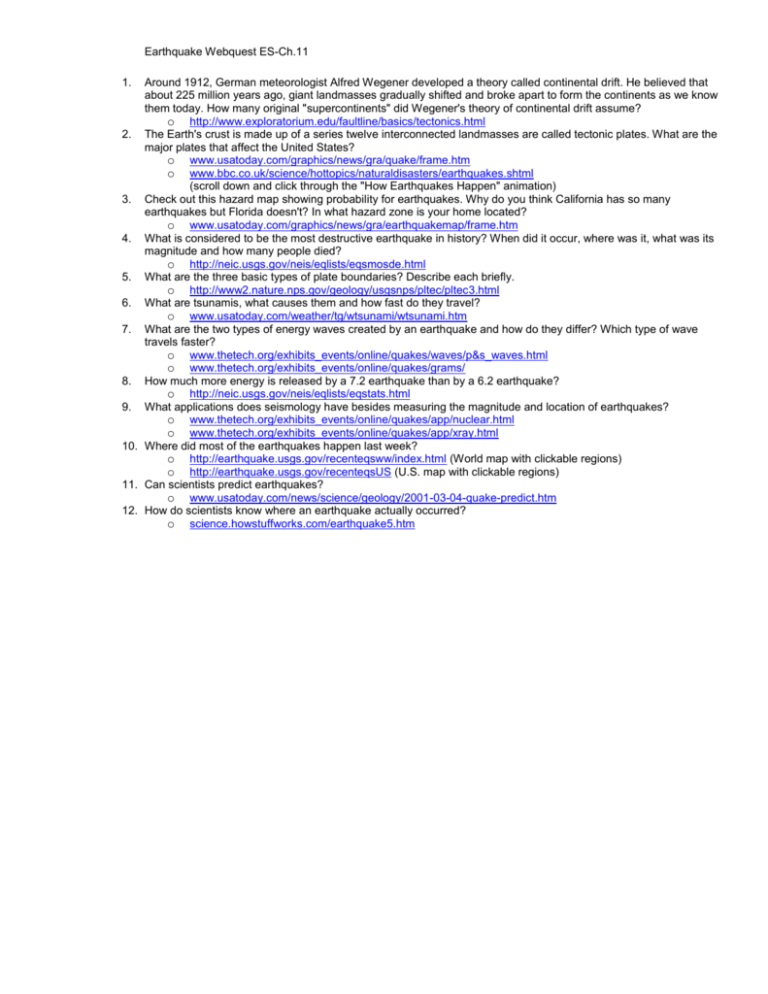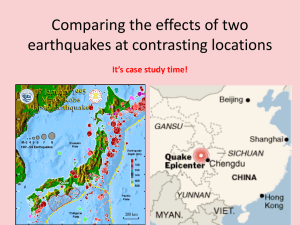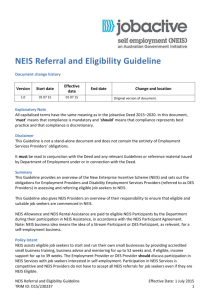Earthquakes Web Activity (ES-Ch.11)
advertisement

Earthquake Webquest ES-Ch.11 1. Around 1912, German meteorologist Alfred Wegener developed a theory called continental drift. He believed that about 225 million years ago, giant landmasses gradually shifted and broke apart to form the continents as we know them today. How many original "supercontinents" did Wegener's theory of continental drift assume? o http://www.exploratorium.edu/faultline/basics/tectonics.html 2. The Earth's crust is made up of a series twelve interconnected landmasses are called tectonic plates. What are the major plates that affect the United States? o www.usatoday.com/graphics/news/gra/quake/frame.htm o www.bbc.co.uk/science/hottopics/naturaldisasters/earthquakes.shtml (scroll down and click through the "How Earthquakes Happen" animation) 3. Check out this hazard map showing probability for earthquakes. Why do you think California has so many earthquakes but Florida doesn't? In what hazard zone is your home located? o www.usatoday.com/graphics/news/gra/earthquakemap/frame.htm 4. What is considered to be the most destructive earthquake in history? When did it occur, where was it, what was its magnitude and how many people died? o http://neic.usgs.gov/neis/eqlists/eqsmosde.html 5. What are the three basic types of plate boundaries? Describe each briefly. o http://www2.nature.nps.gov/geology/usgsnps/pltec/pltec3.html 6. What are tsunamis, what causes them and how fast do they travel? o www.usatoday.com/weather/tg/wtsunami/wtsunami.htm 7. What are the two types of energy waves created by an earthquake and how do they differ? Which type of wave travels faster? o www.thetech.org/exhibits_events/online/quakes/waves/p&s_waves.html o www.thetech.org/exhibits_events/online/quakes/grams/ 8. How much more energy is released by a 7.2 earthquake than by a 6.2 earthquake? o http://neic.usgs.gov/neis/eqlists/eqstats.html 9. What applications does seismology have besides measuring the magnitude and location of earthquakes? o www.thetech.org/exhibits_events/online/quakes/app/nuclear.html o www.thetech.org/exhibits_events/online/quakes/app/xray.html 10. Where did most of the earthquakes happen last week? o http://earthquake.usgs.gov/recenteqsww/index.html (World map with clickable regions) o http://earthquake.usgs.gov/recenteqsUS (U.S. map with clickable regions) 11. Can scientists predict earthquakes? o www.usatoday.com/news/science/geology/2001-03-04-quake-predict.htm 12. How do scientists know where an earthquake actually occurred? o science.howstuffworks.com/earthquake5.htm Earthquake Webquest Answers: Name:_______________________Per:___ 1. Around 1912, German meteorologist Alfred Wegener developed a theory called continental drift. He believed that about 225 million years ago, giant landmasses gradually shifted and broke apart to form the continents as we know them today. How many original "supercontinents" did Wegener's theory of continental drift assume? 2. The Earth's crust is made up of a series twelve interconnected landmasses are called tectonic plates. What are the major plates that affect the United States? 3. Check out this hazard map showing probability for earthquakes. Why do you think California has so many earthquakes but Florida doesn't? In what hazard zone is your home located? 4. What is considered to be the most destructive earthquake in history? When did it occur, where was it, what was its magnitude and how many people died? 5. What are the three basic types of plate boundaries? Describe each briefly. 6. What are tsunamis, what causes them and how fast do they travel? 7. What are the two types of energy waves created by an earthquake and how do they differ? Which type of wave travels faster? 8. How much more energy is released by a 7.2 earthquake than by a 6.2 earthquake? 9. What applications does seismology have besides measuring the magnitude and location of earthquakes? 10. Where did most of the earthquakes happen last week? 11. Can scientists predict earthquakes? 12. How do scientists know where an earthquake actually occurred?










